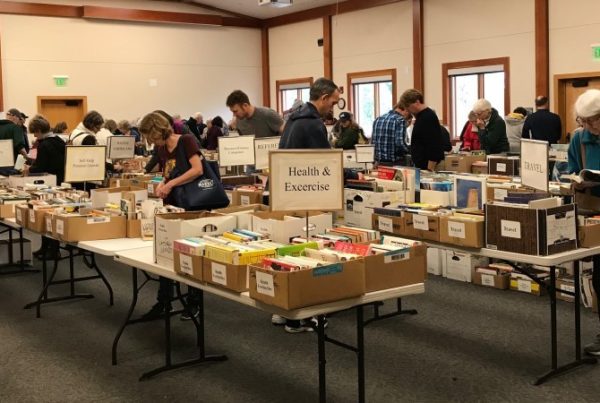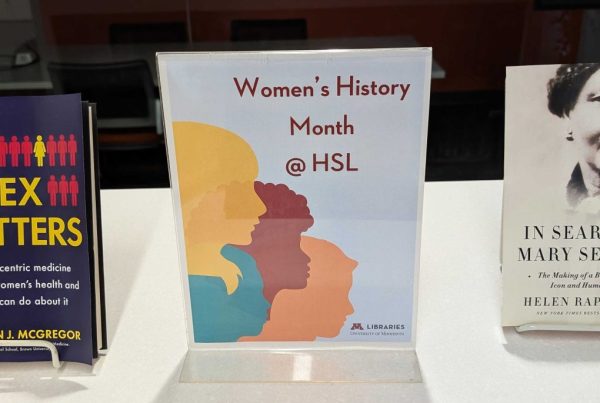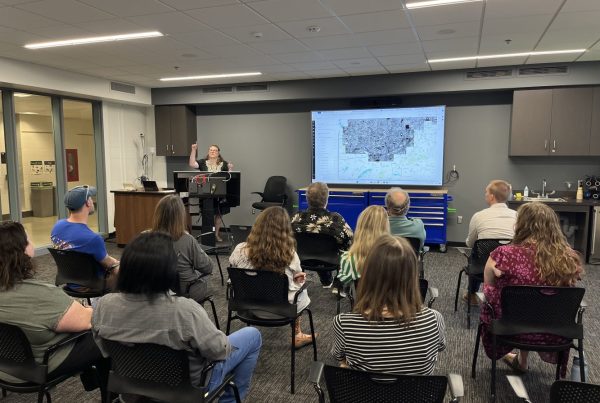The Libraries’ new Campus History web application doesn’t exactly make history come alive, but it sure is fun. Ryan Mattke, head of the John R. Borchert Map Library at the University of Minnesota, advises that you see for yourself.
“To see how fun this is,” he said, “you can just hit play and watch the campus grow.”
Watch the campus grow – over 150 years. That’s the standard feature that the Campus History web application provides. It’s simple, it works, and it’s fun.
But there’s much more here. Just take a few minutes and look under the hood.
For example:
- Using the application’s transparency slider, you can compare historical maps to current satellite imagery of the campus
- You can compare historical aerial imagery across time, so, for example, you can compare 1940 to present day.
- Thanks to data from the Metropolitan Council, you can observe the rise and fall of the streetcar era in the Twin Cities.
It’s more than just fun
The Campus History web application was designed to enhance research and education for the University of Minnesota community and the public. The project is a University Libraries collaboration that includes the Borchert Map Library, University Archives, and Web Development. Mattke worked closely with Erik Moore, head of University Archives, in developing the application and making appropriate links from the application to assets and resources in University Archives and elsewhere.
Along with the fun factor, Mattke said, there’s a research component. One of the main reasons for building Campus History was to help faculty and students find information.
“We do get lots of questions about what the campus looked like, where buildings were – there were lots of changes over the past 150 years,” he said.
Mattke said that faculty and students in history, the humanities, landscape architecture, and geography will find this resource useful – along with those generally interested in maps.
“Students in those areas will be able to utilize this application during the course of the work for their class,” he said.
Project involved tracing more than 500 maps
The project took about a year to complete and involved Mattke and five graduate students tracing the building footprints from about 550 historical campus maps that are housed in University Archives. The sketches are the foundation of the application, as is the building information itself.
“When you click on a building in the Campus History mapping application, you get a pop up that has information about the building, whether the name changed over time, when it was built, if it was torn down, if it was added-on to,” Mattke said. “But then you also get a link into UMedia, so you can go and see if we have, currently, any scanned photos of that building, and see what it looked like at different points in time.”
UMedia Archive is a rich media and image repository, containing assets from the University Archives, special collections, the Map Library, the James Ford Bell Library, and more. The service is provided by the University Libraries.
Mattke said that a few hundred building images are now available, but he added that a digitization project now underway will increase that number significantly.
All of the maps, building images, and underlying GIS data are available from the Libraries, either though University Archives or the Borchert Map Library.
Campus History Map





This is wonderful! Thank you so much to the team that put this project together. I love maps and the interactive aspect of this makes it so much fun. Very clever. Very interesting! I learned a lot about the history of the University. Thank you again, and Happy New Year!